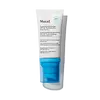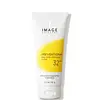Murad Superactive Moisturiser SPF 40 Versus IMAGE skincare PREVENTION+ Daily Matte Moisturizer SPF 32+
What's inside
What's inside
 Key Ingredients
Key Ingredients

 Benefits
Benefits

 Concerns
Concerns

 Ingredients Side-by-side
Ingredients Side-by-side

Water
Skin ConditioningTapioca Starch
Octocrylene
UV AbsorberHomosalate
Skin ConditioningEthylhexyl Salicylate
UV AbsorberPolysilicone-11
Propanediol
SolventButyl Methoxydibenzoylmethane
UV AbsorberButyloctyl Salicylate
Skin ConditioningGlycerin
HumectantPentylene Glycol
Skin ConditioningPropanediol Dicaprylate
EmollientAmylopectin
Coconut Alkanes
EmollientCetearyl Alcohol
EmollientPEG-100 Stearate
Glyceryl Stearate
EmollientButyl Avocadate
Skin ConditioningCapryloyl Salicylic Acid
ExfoliatingCoco-Glucoside
CleansingUrea
BufferingYeast Amino Acids
HumectantTrehalose
HumectantInositol
HumectantTaurine
BufferingBetaine
HumectantPersea Gratissima Oil
Skin ConditioningXylitylglucoside
HumectantAnhydroxylitol
HumectantBisabolol
MaskingAllantoin
Skin ConditioningAmylose
HumectantXylitol
HumectantZinc Gluconate
Skin ConditioningAminomethyl Propanol
BufferingHydrogenated Vegetable Oil
EmollientTocopherol
AntioxidantPolyacrylate Crosspolymer-6
Emulsion StabilisingCoco-Caprylate/Caprate
EmollientCaprylic/Capric Triglyceride
MaskingEthylhexylglycerin
Skin ConditioningXanthan Gum
EmulsifyingLaureth-12
EmulsifyingCellulose
AbsorbentCellulose Gum
Emulsion StabilisingTetrasodium Glutamate Diacetate
Citric Acid
BufferingGlucose
HumectantLeuconostoc/Radish Root Ferment Filtrate
AntimicrobialPhenoxyethanol
PreservativeChlorphenesin
AntimicrobialSodium Benzoate
MaskingPotassium Sorbate
PreservativeCitrus Aurantium Peel Oil
Limonene
PerfumingLinalool
PerfumingDimethyl Phenylethyl Carbinyl Acetate
PerfumingLinalyl Acetate
MaskingCitral
PerfumingPinene
MaskingParfum
MaskingCI 77492
Cosmetic ColorantWater, Tapioca Starch, Octocrylene, Homosalate, Ethylhexyl Salicylate, Polysilicone-11, Propanediol, Butyl Methoxydibenzoylmethane, Butyloctyl Salicylate, Glycerin, Pentylene Glycol, Propanediol Dicaprylate, Amylopectin, Coconut Alkanes, Cetearyl Alcohol, PEG-100 Stearate, Glyceryl Stearate, Butyl Avocadate, Capryloyl Salicylic Acid, Coco-Glucoside, Urea, Yeast Amino Acids, Trehalose, Inositol, Taurine, Betaine, Persea Gratissima Oil, Xylitylglucoside, Anhydroxylitol, Bisabolol, Allantoin, Amylose, Xylitol, Zinc Gluconate, Aminomethyl Propanol, Hydrogenated Vegetable Oil, Tocopherol, Polyacrylate Crosspolymer-6, Coco-Caprylate/Caprate, Caprylic/Capric Triglyceride, Ethylhexylglycerin, Xanthan Gum, Laureth-12, Cellulose, Cellulose Gum, Tetrasodium Glutamate Diacetate, Citric Acid, Glucose, Leuconostoc/Radish Root Ferment Filtrate, Phenoxyethanol, Chlorphenesin, Sodium Benzoate, Potassium Sorbate, Citrus Aurantium Peel Oil, Limonene, Linalool, Dimethyl Phenylethyl Carbinyl Acetate, Linalyl Acetate, Citral, Pinene, Parfum, CI 77492
Zinc Oxide 9.3%
Cosmetic ColorantEthylhexyl Methoxycinnamate 7.5%
UV AbsorberWater
Skin ConditioningCyclopentasiloxane
EmollientIsodecyl Neopentanoate
EmollientDimethicone
EmollientGlycerin
HumectantButyrospermum Parkii Butter
Skin ConditioningCetyl PEG/PPG-10/1 Dimethicone
EmulsifyingDimethicone/PEG-10/15 Crosspolymer
Sodium Acryloyldimethyltaurate/Methacrylamidolauric Acid Copolymer
Caprylyl Methicone
Skin ConditioningPhenoxyethanol
PreservativePolyglyceryl-3 Polydimethylsiloxyethyl Dimethicone
Skin ConditioningCetearyl Dimethicone
EmollientPolyisobutene
Triethoxysilylethyl Polydimethylsiloxyethyl Hexyl Dimethicone
Skin ConditioningXanthan Gum
EmulsifyingEthylhexylglycerin
Skin ConditioningPanthenol
Skin ConditioningPolysorbate 20
EmulsifyingDisodium EDTA
Sodium Hyaluronate
HumectantErythritol
HumectantLecithin
EmollientArabidopsis Thaliana Extract
AntioxidantPEG-8/Smdi Copolymer
Tetrahexyldecyl Ascorbate
AntioxidantTocopheryl Acetate
AntioxidantPotassium Sorbate
PreservativeSodium Benzoate
MaskingHomarine Hcl
Skin ConditioningMalus Domestica Fruit Cell Culture Extract
Skin ConditioningMicrococcus Lysate
Skin ConditioningPlankton Extract
Skin ConditioningErgothioneine
AntioxidantPhospholipids
Skin ConditioningZinc Oxide 9.3%, Ethylhexyl Methoxycinnamate 7.5%, Water, Cyclopentasiloxane, Isodecyl Neopentanoate, Dimethicone, Glycerin, Butyrospermum Parkii Butter, Cetyl PEG/PPG-10/1 Dimethicone, Dimethicone/PEG-10/15 Crosspolymer, Sodium Acryloyldimethyltaurate/Methacrylamidolauric Acid Copolymer, Caprylyl Methicone, Phenoxyethanol, Polyglyceryl-3 Polydimethylsiloxyethyl Dimethicone, Cetearyl Dimethicone, Polyisobutene, Triethoxysilylethyl Polydimethylsiloxyethyl Hexyl Dimethicone, Xanthan Gum, Ethylhexylglycerin, Panthenol, Polysorbate 20, Disodium EDTA, Sodium Hyaluronate, Erythritol, Lecithin, Arabidopsis Thaliana Extract, PEG-8/Smdi Copolymer, Tetrahexyldecyl Ascorbate, Tocopheryl Acetate, Potassium Sorbate, Sodium Benzoate, Homarine Hcl, Malus Domestica Fruit Cell Culture Extract, Micrococcus Lysate, Plankton Extract, Ergothioneine, Phospholipids
 Reviews
Reviews

Ingredients Explained
These ingredients are found in both products.
Ingredients higher up in an ingredient list are typically present in a larger amount.
Ethylhexylglycerin (we can't pronounce this either) is commonly used as a preservative and skin softener. It is derived from glyceryl.
You might see Ethylhexylglycerin often paired with other preservatives such as phenoxyethanol. Ethylhexylglycerin has been found to increase the effectiveness of these other preservatives.
Glycerin is already naturally found in your skin. It helps moisturize and protect your skin.
A study from 2016 found glycerin to be more effective as a humectant than AHAs and hyaluronic acid.
As a humectant, it helps the skin stay hydrated by pulling moisture to your skin. The low molecular weight of glycerin allows it to pull moisture into the deeper layers of your skin.
Hydrated skin improves your skin barrier; Your skin barrier helps protect against irritants and bacteria.
Glycerin has also been found to have antimicrobial and antiviral properties. Due to these properties, glycerin is often used in wound and burn treatments.
In cosmetics, glycerin is usually derived from plants such as soybean or palm. However, it can also be sourced from animals, such as tallow or animal fat.
This ingredient is organic, colorless, odorless, and non-toxic.
Glycerin is the name for this ingredient in American English. British English uses Glycerol/Glycerine.
Learn more about GlycerinPhenoxyethanol is a preservative that has germicide, antimicrobial, and aromatic properties. Studies show that phenoxyethanol can prevent microbial growth. By itself, it has a scent that is similar to that of a rose.
It's often used in formulations along with Caprylyl Glycol to preserve the shelf life of products.
Potassium Sorbate is a preservative used to prevent yeast and mold in products. It is commonly found in both cosmetic and food products.
This ingredient comes from potassium salt derived from sorbic acid. Sorbic acid is a natural antibiotic and effective against fungus.
Both potassium sorbate and sorbic acid can be found in baked goods, cheeses, dried meats, dried fruit, ice cream, pickles, wine, yogurt, and more.
You'll often find this ingredient used with other preservatives.
Learn more about Potassium SorbateSodium Benzoate is a preservative. It's used in both cosmetic and food products to inhibit the growth of mold and bacteria. It is typically produced synthetically.
Both the US FDA and EU Health Committee have approved the use of sodium benzoate. In the US, levels of 0.1% (of the total product) are allowed.
Sodium benzoate works as a preservative by inhibiting the growth of bacteria inside of cells. It prevents the cell from fermenting a type of sugar using an enzyme called phosphofructokinase.
It is the salt of benzoic acid. Foods containing sodium benzoate include soda, salad dressings, condiments, fruit juices, wines, and snack foods.
Studies for using ascorbic acid and sodium benzoate in cosmetics are lacking, especially in skincare routines with multiple steps.
We always recommend speaking with a professional, such as a dermatologist, if you have any concerns.
Learn more about Sodium BenzoateWater. It's the most common cosmetic ingredient of all. You'll usually see it at the top of ingredient lists, meaning that it makes up the largest part of the product.
So why is it so popular? Water most often acts as a solvent - this means that it helps dissolve other ingredients into the formulation.
You'll also recognize water as that liquid we all need to stay alive. If you see this, drink a glass of water. Stay hydrated!
Learn more about WaterXanthan gum is used as a stabilizer and thickener within cosmetic products. It helps give products a sticky, thick feeling - preventing them from being too runny.
On the technical side of things, xanthan gum is a polysaccharide - a combination consisting of multiple sugar molecules bonded together.
Xanthan gum is a pretty common and great ingredient. It is a natural, non-toxic, non-irritating ingredient that is also commonly used in food products.
Learn more about Xanthan Gum